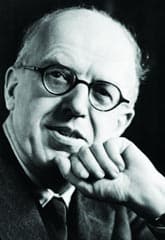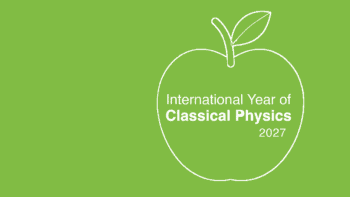Robert P Crease asks why the idea of the “two cultures”, coined by C P Snow 50 years ago, still feels so current — despite the book that promoted the idea being both dated and flawed

Half a century ago this month, the physicist and author Charles Percy Snow (1905—1980) delivered the annual Rede Lecture in the Senate House of the University of Cambridge. (Usually referred to as C P Snow, he was later made a life peer and enjoyed appearing in the House of Lords as Baron Snow, despite being a self-professed socialist.) Its title — “The Two Cultures” — referred to a gulf Snow diagnosed between “literary intellectuals” and “natural scientists”, and it elaborated themes he had mentioned in the New Statesman three years earlier. The talk was published in Encounter in June and July 1959, and then as a book.
Soon after the book appeared, critics attacked Snow’s abilities as a writer, his achievements as a scientist, the rigour of his concepts, the legitimacy of his characterizations and the validity of his claims. Yet the book remains in print, and its famous phrase continues to describe the gulf still perceived to exist between the arts and sciences.
Snow’s book indeed seems flawed. His style is informal: his conception of “culture” is vague, and he appeals to anecdotes, personal recollections and what he calls “subterranean back-chat”. His most famous piece of evidence is his tale of parties he attended at which literary intellectuals not only could not describe the second law of thermodynamics, but bristled at his suggestion that a cultured person ought to be able to do so.
A second flaw is stereotyping and naivety. Snow characterized scientists as predominantly lower class, progressive, optimistic and forward-looking; and literary intellectuals as largely upper class, conservative, pessimistic and content with the status quo. He naively asserted that education could overcome the divide between the two cultures, that “technology is rather easy”, and that the gap between rich and poor would vanish by 2000.
Snow’s tone, too, is occasionally disturbing. Resentment is detectable in his descriptions of literary culture, and in the New Statesman article he exhibits some of the casual homophobia of the time when he describes scientists as “steadily heterosexual”, lacking the “feline and oblique” character which, he implied, was found in the literary world.
Scandalous synecdoche
But few of Snow’s detractors — who included the American critic Lionel Trilling and the British critic F R Leavis — seem to have read him carefully. Snow freely acknowledged that he was using “culture” loosely. Furthermore, a public address calls for insight and reflection — even provocation and entertainment — rather than scholasticism, and here Snow triumphed. The second-law anecdote was brilliant: the law is not a mere bit of information, but the expression of a key structure of our world, knowledge of which checks humanity’s deeply ingrained but dangerous fantasies. Snow used this example to expose a scandalous synecdoche in the literary world, in which its culture is equated with the whole of culture.
Few critics, too, appreciate that Snow used language differently from literary critics. He was neither advancing claims nor outlining a theory; he was using the anecdotes to call something to our attention for us to see ourselves. Philosophers call such use of language “formal indication”. It is indicative, for it aims only to point at something rather than paint it in detail, knowing that we would experience it differently. It is formal, for it provides enough clues so that we can identify it nevertheless.
Snow’s indications allow us to recognize the two-culture gap half a century later in a different world. At a dinner recently, I sat across from a mathematician who felt perfectly comfortable asserting that his professional work was located in a special, ideal mathematical world that it took years to master and from which I was excluded – but who expected that my professional work as a philosopher ought to be fully explainable to him in a few sentences, and who mocked me when I said it could not. I also recognize the two-culture gap in the attitude of historians, novelists and philosophers who deride the idea that they need to incorporate science when thinking through humanity’s “important questions”; a condition that I named — with less flair than Snow — “anosognosia” (Physics World September 2005 p19 and February 2006 p18).
Finally, most critics fail to notice that Snow’s ultimate concern was moral. It was not with the two cultures as such, but with the Venetian shadow. In its last half-century, the Venetian Republic was powerful, lucky and wealthy; its leaders patriotic, tough and pragmatic. Yet they could not stop the republic from sliding into decline, due to entrenched habits that prevented them from mobilizing their vast resources. The Venetian shadow still haunts us, Snow thought. To banish it, we must overhaul our overspecialized educational system — and that’s why the two cultures matters.
The critical point
The flood of responses inspired by the book led Snow to compare himself to the sorcerer’s apprentice. Its continuing popularity is indeed surprising, given that Snow’s expectations were unrealistic, his description of culture simplistic and his characterizations stereotyped.
The number of literary intellectuals who know the second law is probably slightly higher than in Snow’s time, thanks to writers like Thomas Pynchon and Tom Stoppard, who have incorporated it into their work. And certain new scholarly fields, such as science and technology studies, span the two cultures. Yet these are small developments that leave the two poles essentially intact. The pertinence of the phrase “two cultures” continues; the science kids and the humanities kids, as it were, still sit at different tables in the lunchroom. Anosognosia still afflicts them both, as well as the shameless asymmetry in which “culture” is associated mainly with humanities education. Most disturbingly, however, the nagging continued relevance of Snow’s phrase should force us to rethink our intended solutions to today’s moral concerns, including energy policy, global warming, and genetic engineering.



